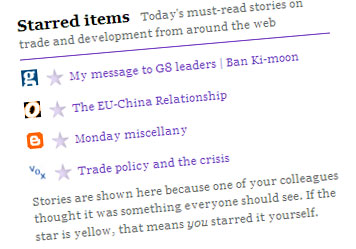Former e-government minister Tom Watson has tabled a string of Parliamentary Questions, asking various government departments what plans they have to upgrade their default web browser from Internet Explorer v6. The answers are starting to come in, and they aren’t pretty.
… no plans to change …
… in the process of reviewing the options… no decision as to which web browser the Department will update to or when any update might take place …
… currently reviewing our options …
… the upgrade to IE is planned to be completed prior to Microsoft ceasing to support IE6 …
But the most depressing response so far comes from the Ministry of Defence:
The Ministry of Defence (MOD) is currently implementing the Defence Information Infrastructure (Future) (DII(F)). DII(F) will, once delivered in full, incorporate around 140,000 terminals supporting some 300,000 users at over 2,000 defence sites worldwide, including on ships and deployed operations. DII currently uses Internet Explorer 6 and at the current time does not have a requirement to move to an updated version.
So maybe it’s worth running through precisely why it’s such a bad thing that government departments aren’t being systematically moved off IE6. It’s partly technical, partly design – but mostly, I think, it’s the symbolism of departments refusing to move forward.
On the technical front, IE6 has security holes that just aren’t being fixed. Analysts Secunia say there have been 10 security alerts in the last year; and that there are 21 unresolved problems. Now to be honest, day-to-day, this probably doesn’t amount to much more than a theoretical risk, but it’s a risk nonetheless.
It’s also slow: IE8 is twice as fast at running Javascript, whilst the latest versions of Firefox and Google’s Chrome are at least 4x faster. This hasn’t mattered much until the explosive growth of Ajax techniques in the last year or two. But now, a lot of the revolutionary ‘web 2.0’ sites simply aren’t usable on IE6. And with more and more stuff happening in the web browser (‘G-Cloud’?), it’s only going to get worse.
Then there’s the design issues. Most web design these days is (or should be) based entirely on CSS, Cascading Style Sheets. And frankly, IE6’s handling of CSS is appalling. Ask any web designer, they’ll tell you the same story:

If you follow the W3C rules, designs will generally work perfectly (ish) first time on Firefox, Chrome, Safari, and in all fairness, IE8. Then you hold your breath, and test it in IE6… and goodness knows how it’ll come out. Things might be the wrong size, or in the wrong place, or might not be visible at all. The layout you spent weeks crafting could be a complete mess. You then have to spend ages bastardising your code, often breaking those W3C rules – and sometimes defying all logic! – to make it come out right, or near enough, in IE6. It takes time, it costs clients money, and it makes designers sad.
In reality, everyone in the industry knows this. We’ve been living with it for long enough, and we’ve all got our various workarounds. We factor the IE6 delay into our timescales. We know not to be too ambitious sometimes, ‘because it’ll never work in IE6’.
But the reason it’s such a sore point for us government hangers-on is that IE7 (released in October 2006) is free of charge, and Microsoft’s formally recommended course of action is to upgrade. Dammit, that’s what HM Government itself tells people to do. Yet departments are quite happily burying their heads in the sand – ignoring the sound technical, financial and qualitative reasons for upgrading.
They think doing nothing is the safe option. They’re wrong.



 It turns out that not all bankers are greedy b*%@!#s. Having gathered quite enough dust in an upstairs drawer, I finally decided it was time to get shot of a couple of old mobile phones I’ve had lying around for (literally) years. Coincidentally, both were Windows Mobile smartphones: an Orange C500 and a T-Mobile MDA Pro. Both had served me well: y0u couldn’t argue with the C500 in its time, a candybar smartphone which did it all; the MDA was really too big to be a phone, but it found plenty of use as a pocket laptop.
It turns out that not all bankers are greedy b*%@!#s. Having gathered quite enough dust in an upstairs drawer, I finally decided it was time to get shot of a couple of old mobile phones I’ve had lying around for (literally) years. Coincidentally, both were Windows Mobile smartphones: an Orange C500 and a T-Mobile MDA Pro. Both had served me well: y0u couldn’t argue with the C500 in its time, a candybar smartphone which did it all; the MDA was really too big to be a phone, but it found plenty of use as a pocket laptop. Of course, there’s a risk of information overload. So we’ve built a ‘collaborative editing’ function – along the lines of Google Reader’s shared items, but done as a group thing. If you read something which you think your colleagues ought to see too, you click the star icon, and it gets promoted to a ‘daily highlights’ list on the site homepage. Then, at the end of each day, there’s a Daily Email which rounds up all the ‘starred items’ – so even if you never look at the website, and we’re realistic enough to accept that some won’t, then you can still get the benefit from it.
Of course, there’s a risk of information overload. So we’ve built a ‘collaborative editing’ function – along the lines of Google Reader’s shared items, but done as a group thing. If you read something which you think your colleagues ought to see too, you click the star icon, and it gets promoted to a ‘daily highlights’ list on the site homepage. Then, at the end of each day, there’s a Daily Email which rounds up all the ‘starred items’ – so even if you never look at the website, and we’re realistic enough to accept that some won’t, then you can still get the benefit from it.